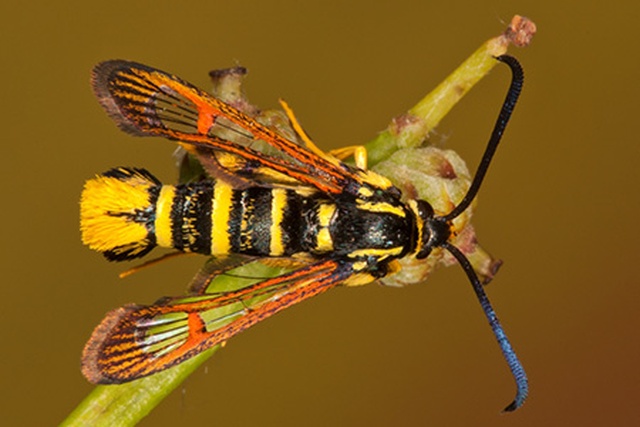Sesiidae Boisduval, 1828 Family
Last modified: Jan. 17, 2026, 3:30 p.m.
The Sesiidae, of cosmopolitan distribution, comprise about 1,450 described species. Most of these occur in the tropics, but many are found in the Holarctic region (van Nieukerken E. J., Kaila L., Kitching I. J., Kristensen N. P. (...) Yakovlev R. V., Zolotuhin V. V. & Zwick A. 2011: 216).
In the Western Palaearctic region, all species are day active. The larvae are off-white and live inside their host plants: they are endophagous. The abdominal legs (prolegs) carry two wreaths of hooks, making them easily distinguishable from beetle larvae.
It is often thought that Sesiidae larvae are xylophagous (feeding on wood) but they feed only on the sap. For this reason, some species induce the formation of sap-rich galls on the host plant but many also use existing galls or swellings on the host plant in which to develop.
In almost all species, pupation takes place inside the plant. On hatching, the pupa pushes itself halfway out of the plant before the imago emerges. Depending on the species, the future exit hole is often difficult to see or quite invisible.

Details
- Classification
- Family: Sesiidae
- Vernacular names
- Wespvlinders (NL), Clearwing moths (EN), Sésies (FR), Glasflügler (DE)
- Species in Belgium
- 25
Direct lower taxa
Show Hide subfamily-group names (2)
| Seq. # | Name | Vernacular names |
|---|---|---|
| 390010 |
Tinthiinae Le Cerf, 1917 |
|
| 390020 |
Sesiinae Boisduval, 1828 |
Species in Belgium

